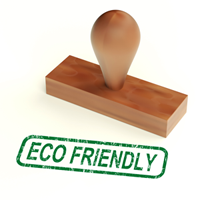
Baker Commodities, Inc. plays an essential role in protecting the environment. Our manufacturing facilities help to alleviate the nation’s problem of over-burdened landfills by recycling millions of pounds of animal by-product and used cooking oil that would otherwise be disposed of as waste. We utilize state-of-the-art technology to treat process water while complying with all odor abatement and air pollution regulations to preserve a clean and safe environment.

When materials are rendered, the process makes products that are used in the agriculture, oleo chemical, and biofuels industries. This means we produce fats and oils, protein meals and water. The materials we recycle are prevented from entering landfills to decay and create GHGs that pollute and have a detrimental effect on the environment.
Other recycling methods, such as composting, may get rid of the recyclable materials and make amendments for soils, but the composting process also produces large amounts of carbon dioxide and methane that is not captured. Gases from composting add to the GHGs in the atmosphere that may contribute to global warming or climate change. Products from the rendering processes do not.

Baker Commodities, Inc. is 100% committed to making every day a world environment day!